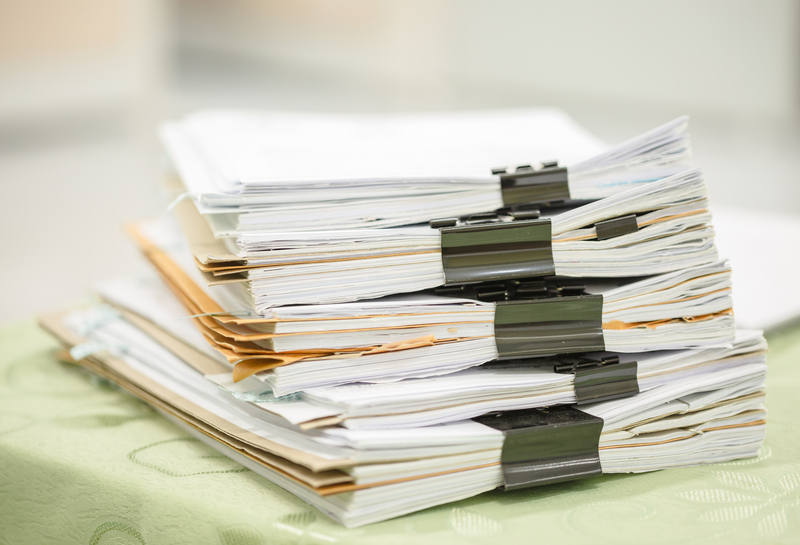How to Pack Your Kitchen for a Move: Key Tips
Posted on 20/02/2025
Moving can be a stressful venture, particularly when it comes to packing one of the most utilized spaces in your home--the kitchen. The kitchen harbors an array of items, varying from delicate glassware to heavy appliances, which necessitates a strategic packing approach. Here, we'll present comprehensive guidelines and tips for packing your kitchen efficiently to ensure a smooth transition during your move.
Planning and Organization
Before diving into the packing process, it's crucial to set up a detailed plan and get organized. Begin by gathering all the packing materials you will need, such as sturdy boxes, bubble wrap, packing paper, tape, and markers. Consider creating an inventory of the items in your kitchen, which can help you stay organized and manage your time effectively.
Gather Supplies
- Boxes: Use a combination of small, medium, and large boxes. Material-specific boxes like dish-pack boxes are ideal for fragile items.
- Bubble Wrap & Packing Paper: These are essential for wrapping delicate items to prevent breakage.
- Tape: Opt for high-quality packing tape to secure the boxes properly.
- Markers & Labels: Use these to label your boxes, which makes unpacking easier and more organized.

Declutter and Sort
One of the first steps to a successful kitchen pack is decluttering. Sort through your items and identify what you use regularly, what you rarely use, and what might need donating or discarding. This step not only reduces the number of items you need to pack but also helps in ensuring you don't carry unnecessary stuff to your new home.
Categorize Items
- Essential Items: These are items you use daily and will need quick access to at your new place.
- Non-Essentials: Less frequently used items can be packed early.
- Fragile Items: Separate these for special packing attention.
- Bulk Items: Separate large and bulky items that might require special handling.
Step-by-Step Guide to Packing Your Kitchen
With your supplies ready and items sorted, it's time to start packing. Follow this step-by-step guide to ensure each category is properly packed and secured.
1. Pack Non-Essentials First
Begin with items you do not use daily, such as specialty cookware or seasonal items. By starting with non-essentials, you can keep your kitchen operational until the day of the move. Wrap each item individually and group similar items together for easier unpacking.
2. Handle Fragile Items with Care
Fragile items like glassware, china, and ceramic should be wrapped individually in bubble wrap or packing paper. Use dividers in boxes specifically designed for glassware, if possible. Always label these boxes as "Fragile" to ensure careful handling during the move.
3. Pack Pots, Pans, and Cookware
Pots, pans, and other sturdy cookware can be packed together, but remember to use packing paper or bubble wrap to prevent scratches. Stack pots and pans, placing smaller ones inside larger ones, and fill any gaps with paper or dish towels to avoid movement within the box.
4. Secure Small Appliances
Small kitchen appliances, such as blenders, coffee makers, and mixers, should be packed in their original boxes if available. If not, use a sturdy box and fill any empty spaces with packing paper or bubble wrap to cushion them. Ensure all appliances are clean and dry before packing.
5. Pack Food Items
Sort through your pantry and fridge. Discard expired items and donate non-perishables you won't use. Pack sealed, non-perishable food items in medium-sized boxes. Avoid moving perishables unless the distance is short, as they can spoil.
6. Handle Large Appliances
Moving large kitchen appliances like refrigerators, stoves, and dishwashers requires special preparation. Empty and clean these appliances thoroughly before moving. Remove any detachable parts and pack them separately. For the fridge, defrost it a day before the move and ensure it's completely dry to avoid leaks.
Day of the Move
On the day of the move, ensure you have a box of essentials that you will need immediately upon arrival at your new home. This may include basic utensils, a few plates, cups, cleaning supplies, and any necessary small appliances. Make this box easily accessible to avoid rummaging through boxes on the first night.
Final Check
Conduct a final check of your kitchen to ensure nothing is left behind. Check all cupboards, drawers, and the fridge. Ensure all boxes are securely taped and properly labeled with their contents and the room they belong to.

Unpacking Efficiently
Once you arrive at your new home, start unpacking the essential items first. Reassemble your kitchen systematically to make the new space functional as soon as possible. Unpack fragile items carefully and place them in a safe location. Taking your time during unpacking can help you keep your new kitchen organized and efficient.
Distribute Boxes to Appropriate Areas
Place each labeled box in the appropriate area within the kitchen or storage space. Unpacking becomes more streamlined when you're handling one category of items at a time.
Conclusion
Packing your kitchen for a move does not have to be a daunting task. With proper planning, organization, and these key tips, you can pack your kitchen efficiently, ensuring the safety of your items and a smoother transition to your new home. By following these steps, you'll find yourself settling into your new kitchen with ease and minimal stress.
Remember to start early and pace yourself, making the process manageable and less overwhelming. Here's to a successful and stress-free move!



